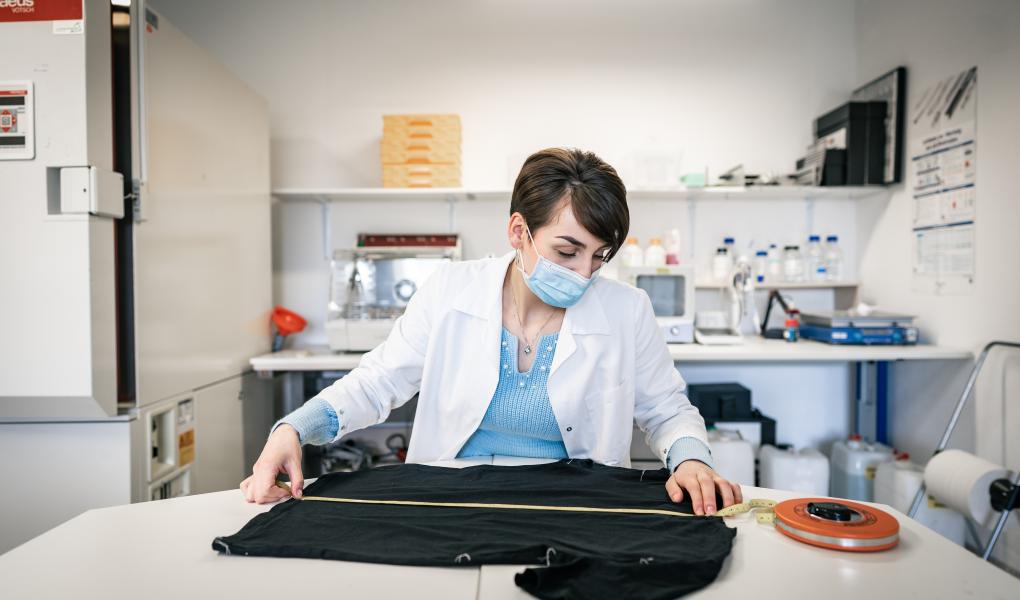The laboratory test includes the following main points:
- Shrinkage and deformation
- Color fastness
- Quality and durability of the material
The garments are machine washed ten times at 40°C and hung dry after each wash. Washing and drying are carried out according to standard ISO 6330:2021.Shrinkage is measured on the width and length after three and ten washes, respectively.
After ten washes, a visual assessment of changes in the structure of the t-shirts is made. The effect on seams, deformation, twisting of the body, and changes in neckline diameter and collar stability are measured.
Change in t-shirt color (fading) is measured by an optical colorimeter and visually assessed after ten washes.
The influence of color on transpiration (sweating), discoloration when rubbing, and color bleeding against other materials when washing in a machine is tested before washing.
The material's strength and stretch (penetration and tensile strength) are tested according to ISO 13938-2 where the material is exposed to an increasing air pressure (kPa) until it cracks.
The material's resistance to abrasion is tested up to 7,000 revolutions with an assessment of wear and pilling.
Interpretation and grading
The results from the laboratory test are interpreted and graded in consultation with the performing laboratory. The rating is made on a scale from 1 to 10, where 10 is the best. Grades below 6 are only given if the results can be considered bad or significantly worse than other products in the test.
In the overall grade, the test's parts are given the following weight:
Shrinkage and deformation 50%
Color fastness 25%
Quality and durability of the material 25%

